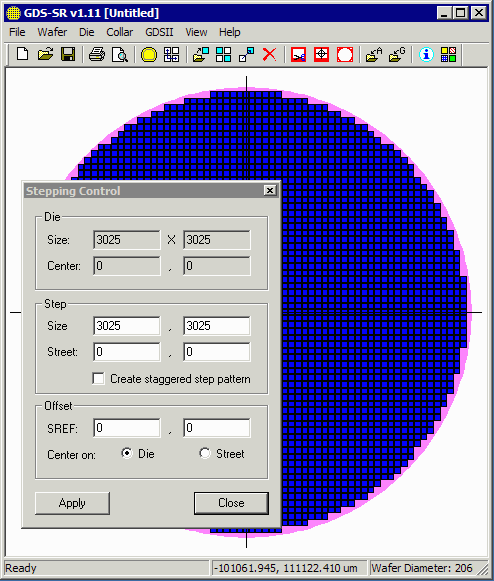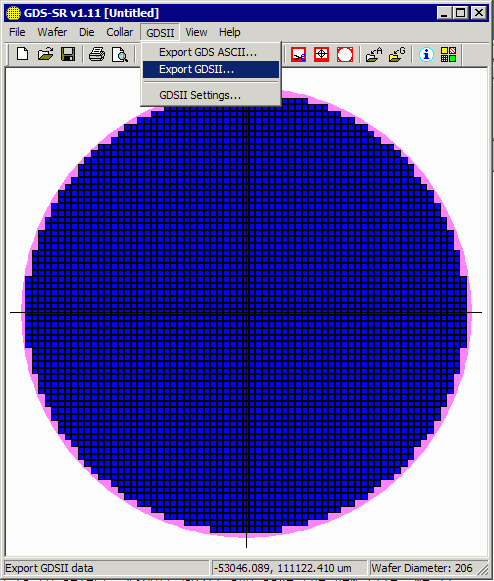To use GDS-SR to step our redistribution circuit, we first enter the wafer size and margin. Notice that in this case we have actually entered a diameter that is larger than our wafer.
This is to overcome GDS-SR's behavior of not inserting a cell if any part of it crosses the edge of the boundary. Since we are going to use another program to smoothly clip the data, we need the data to extend out past the desired clipping boundary.



